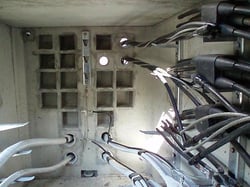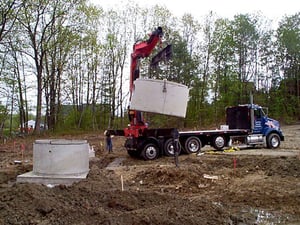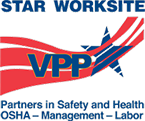 Roco’s new Hierarchy of Fall Protection Safety Poster provides guidance on how to protect your workers from fall hazards by illustrating a series of steps in making safer choices as job duties are approached. It clearly explains the need for employers to make every attempt to abate fall hazards at their work sites by starting with the most protective level of fall protection. OSHA and ANSI references are used to emphasize the need for proper training and “fallen or isolated worker-at-height” rescue pre-plans when appropriate.
Roco’s new Hierarchy of Fall Protection Safety Poster provides guidance on how to protect your workers from fall hazards by illustrating a series of steps in making safer choices as job duties are approached. It clearly explains the need for employers to make every attempt to abate fall hazards at their work sites by starting with the most protective level of fall protection. OSHA and ANSI references are used to emphasize the need for proper training and “fallen or isolated worker-at-height” rescue pre-plans when appropriate.
This safety poster will provide a quick reminder that oftentimes working at height is more hazardous simply because more “protective steps” in the hierarchy were never considered.
By displaying this poster in strategic areas, we hope it will encourage all workers to take every opportunity to make work-at-height even safer. After all, for those of you who know Roco…there’s a safe way, and a SAFER way!
Click the picture to download the PDF version of the NEW Hierarchy of Fall Protection Safety Poster.

 Roco is excited to announce that beginning in 2014, we will offer a ProBoard/IFSAC option conducted by the Carrol L. Herring Fire & Emergency Training Institute for select Roco courses at the Roco Training Center (RTC) in Baton Rouge. Students choosing the ProBoard option will complete both a written and skills exam. Upon successful completion of this certification process, they are then eligible to be entered into the ProBoard’s certification registry.
Roco is excited to announce that beginning in 2014, we will offer a ProBoard/IFSAC option conducted by the Carrol L. Herring Fire & Emergency Training Institute for select Roco courses at the Roco Training Center (RTC) in Baton Rouge. Students choosing the ProBoard option will complete both a written and skills exam. Upon successful completion of this certification process, they are then eligible to be entered into the ProBoard’s certification registry.
 At a meeting earlier this month, NFPA’s Guide for Safe Confined Space Entry and Work (Draft) was approved for public comment by the NFPA Standards Council.
At a meeting earlier this month, NFPA’s Guide for Safe Confined Space Entry and Work (Draft) was approved for public comment by the NFPA Standards Council. 
 The General Industry standard for welding, cutting, and brazing activities does have certain requirements that are similar to some of the PRCS requirements.
The General Industry standard for welding, cutting, and brazing activities does have certain requirements that are similar to some of the PRCS requirements. 


